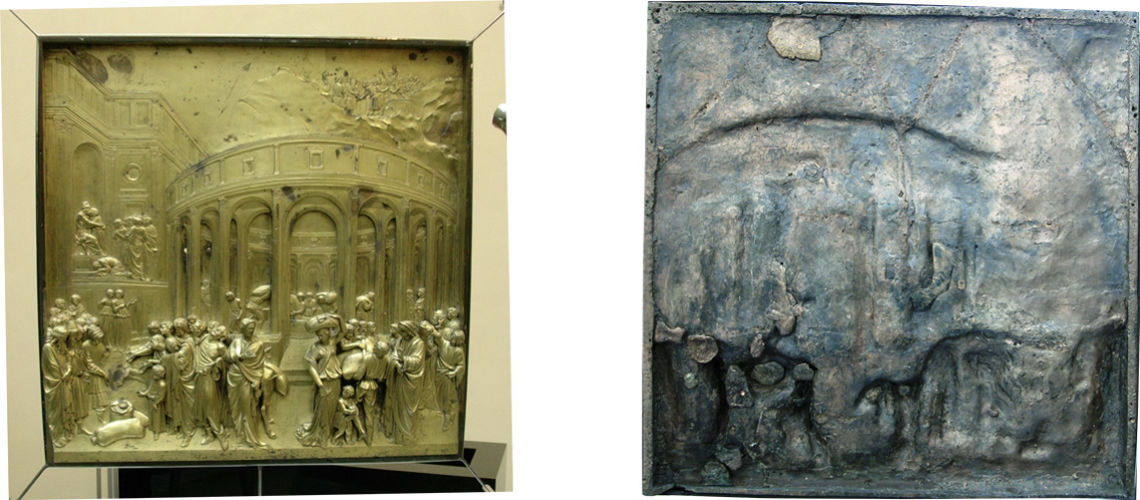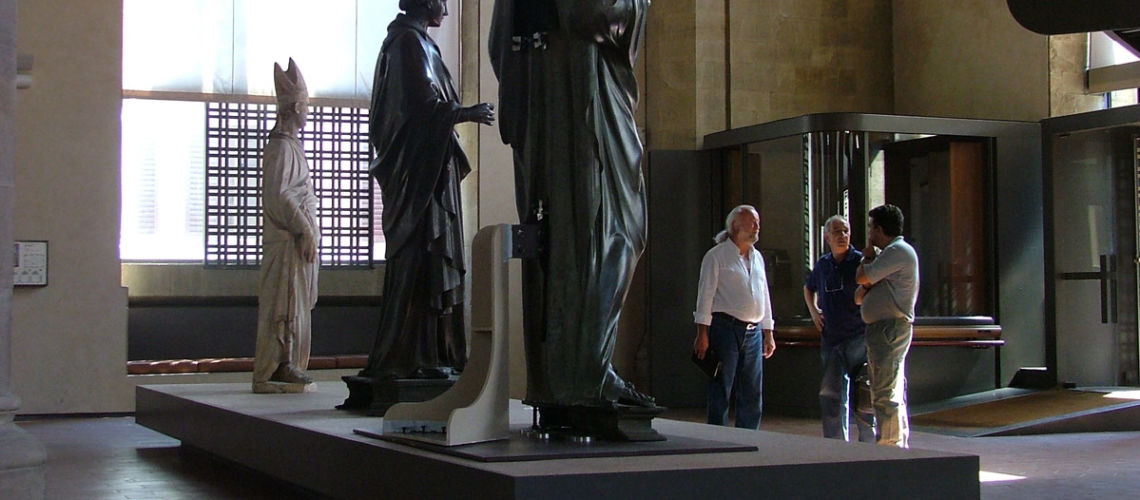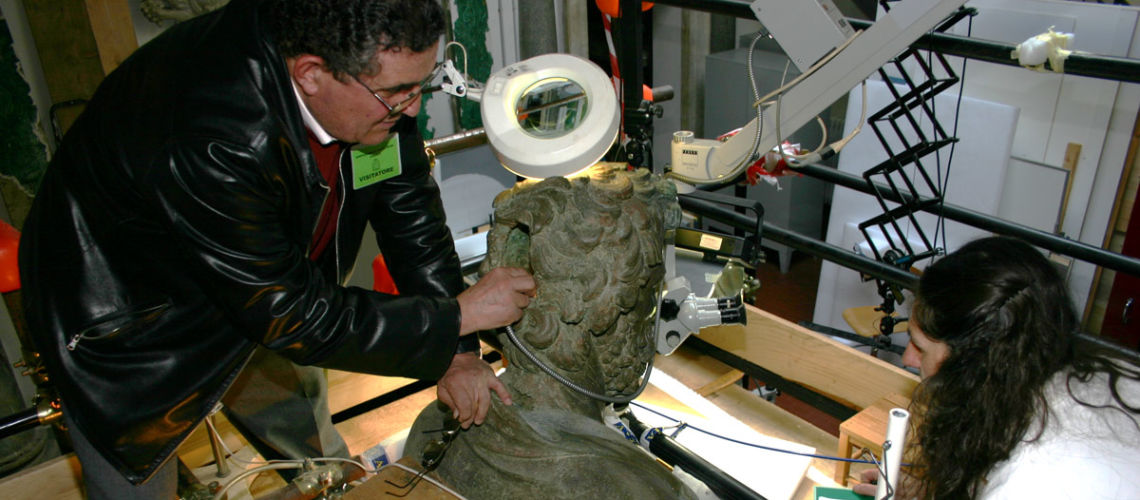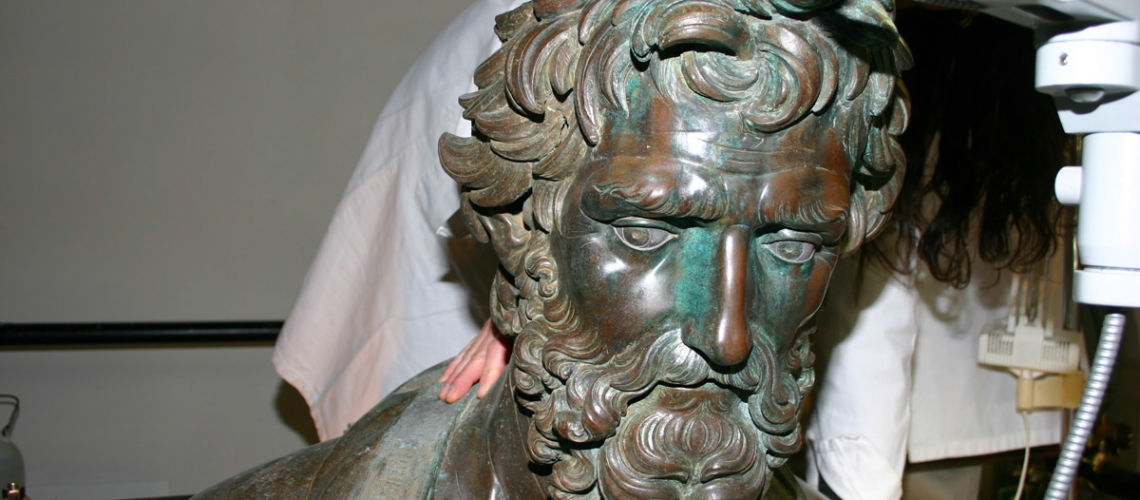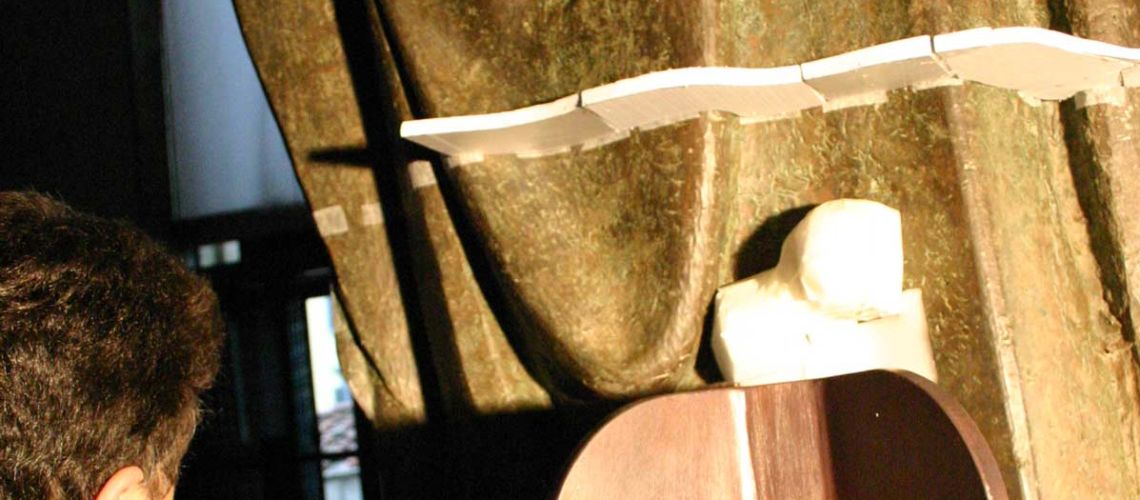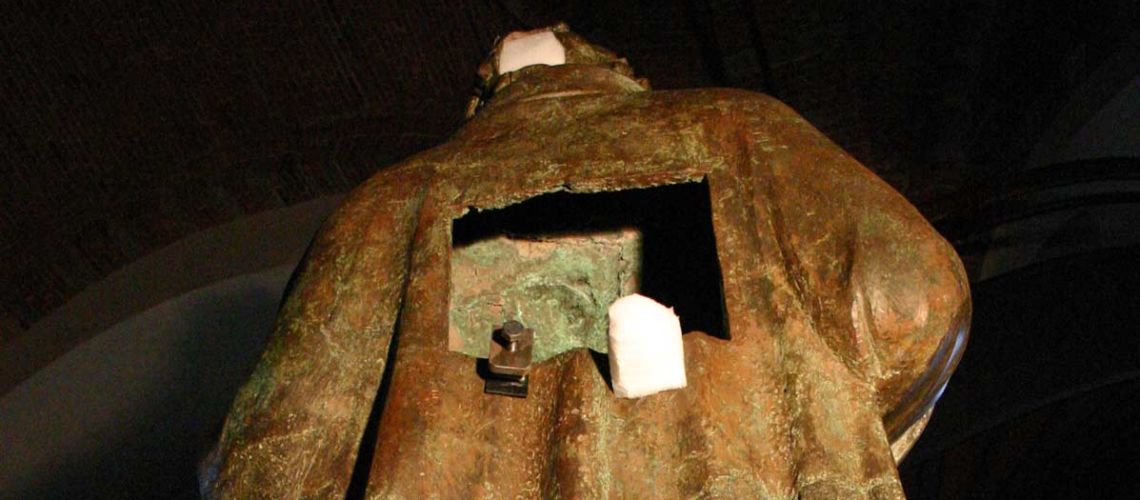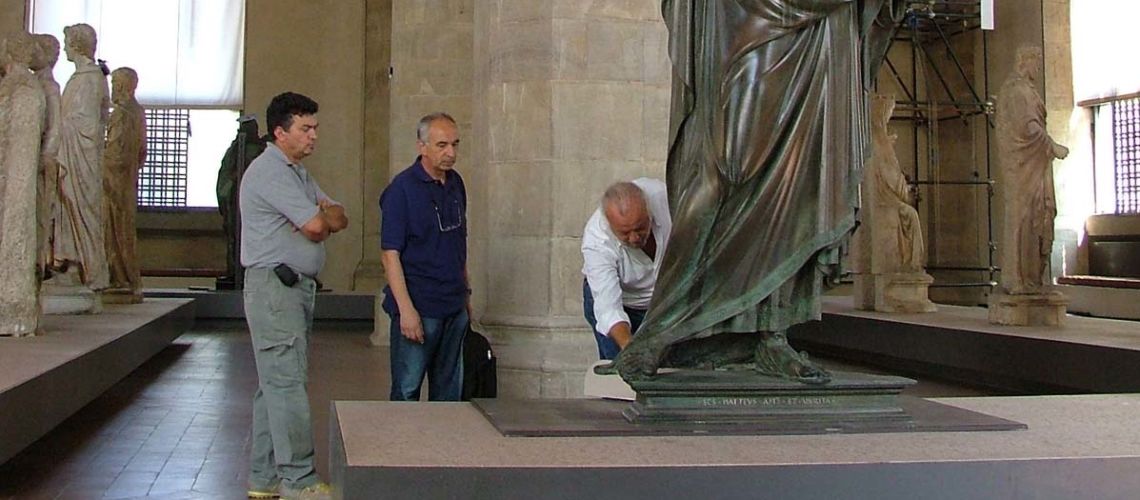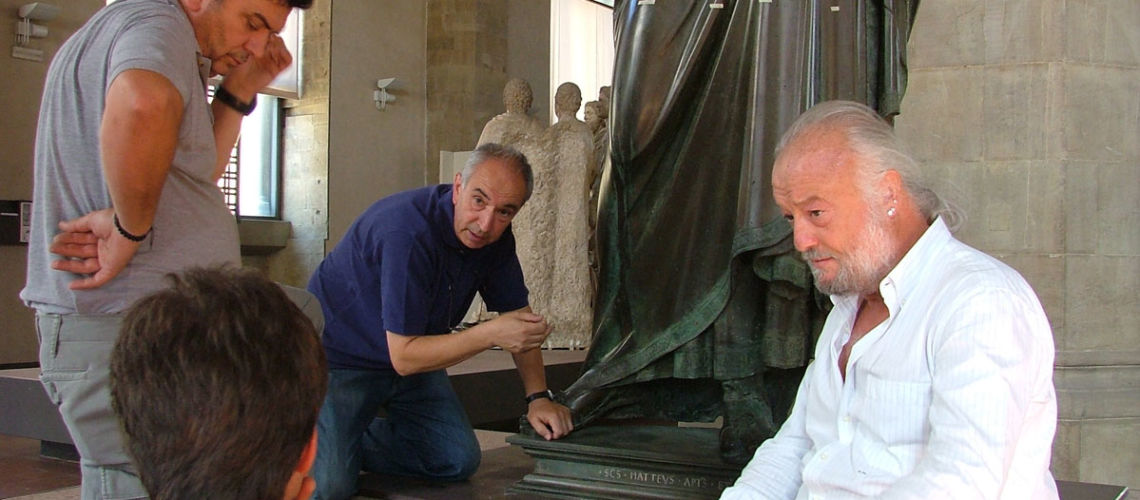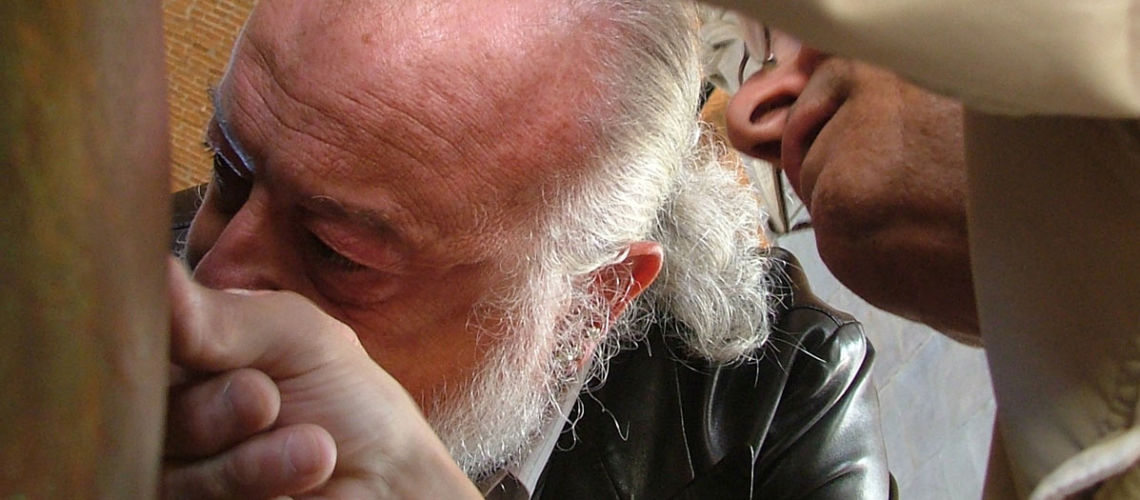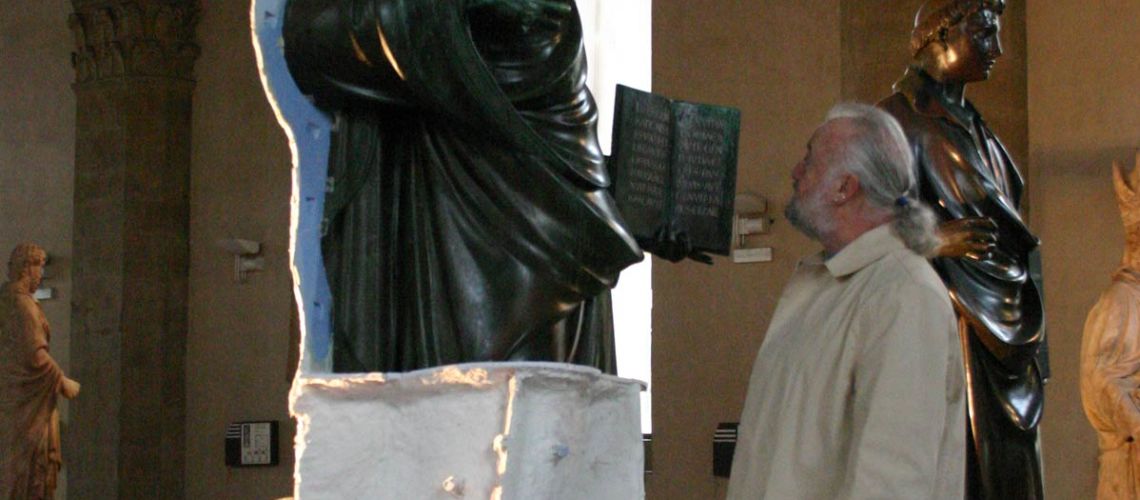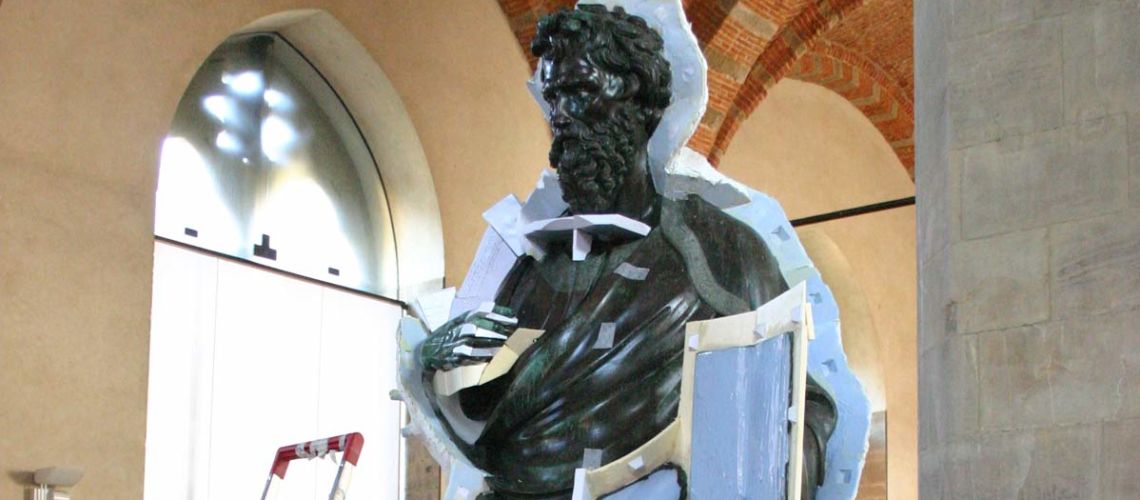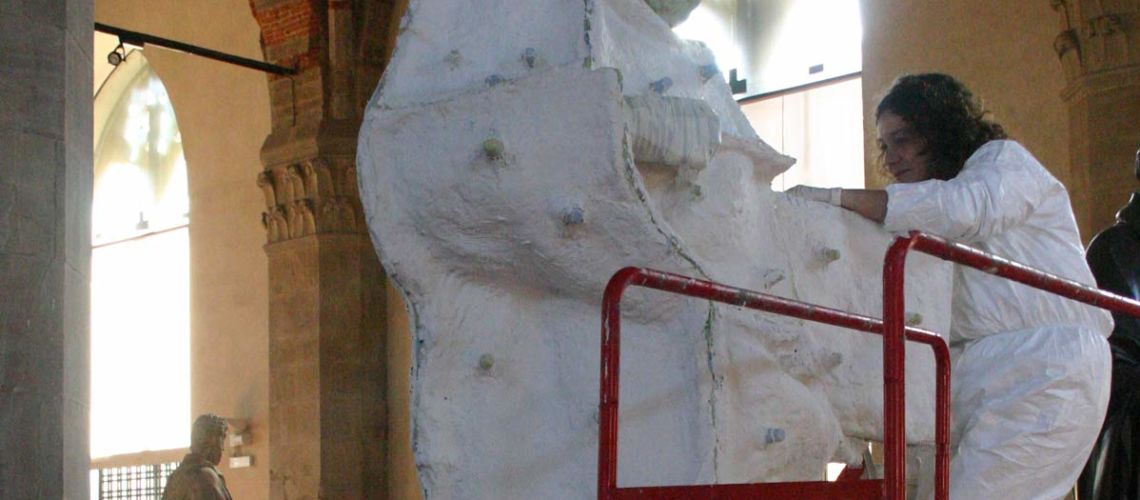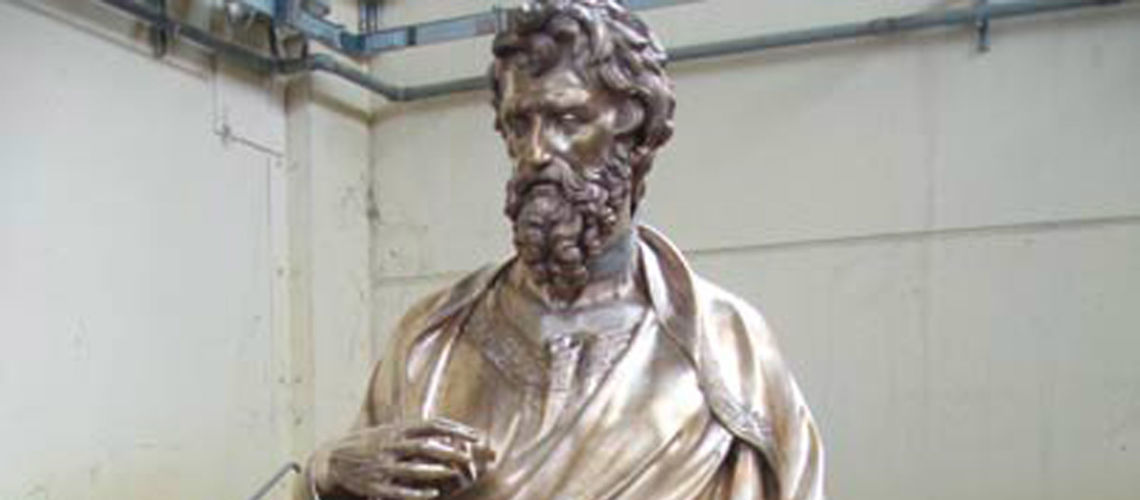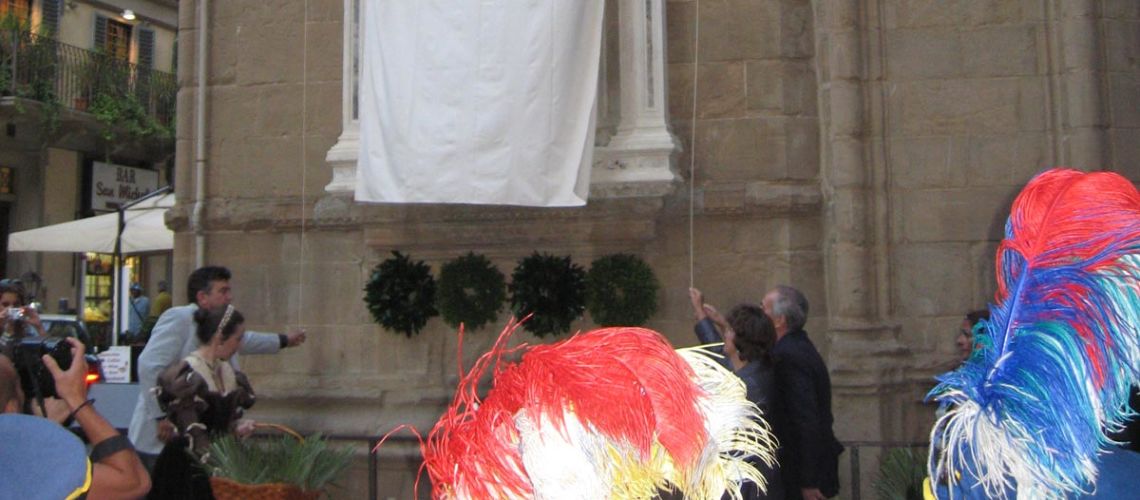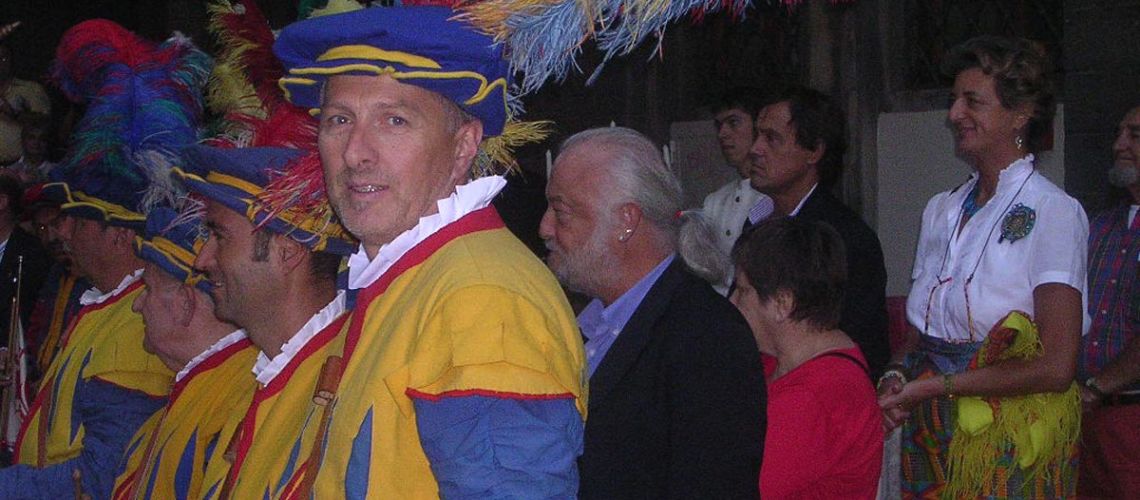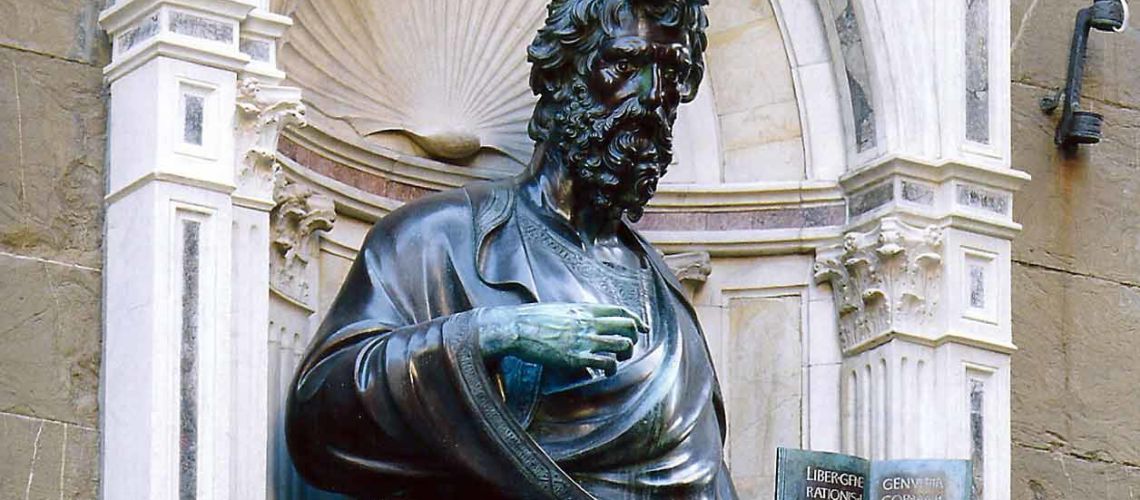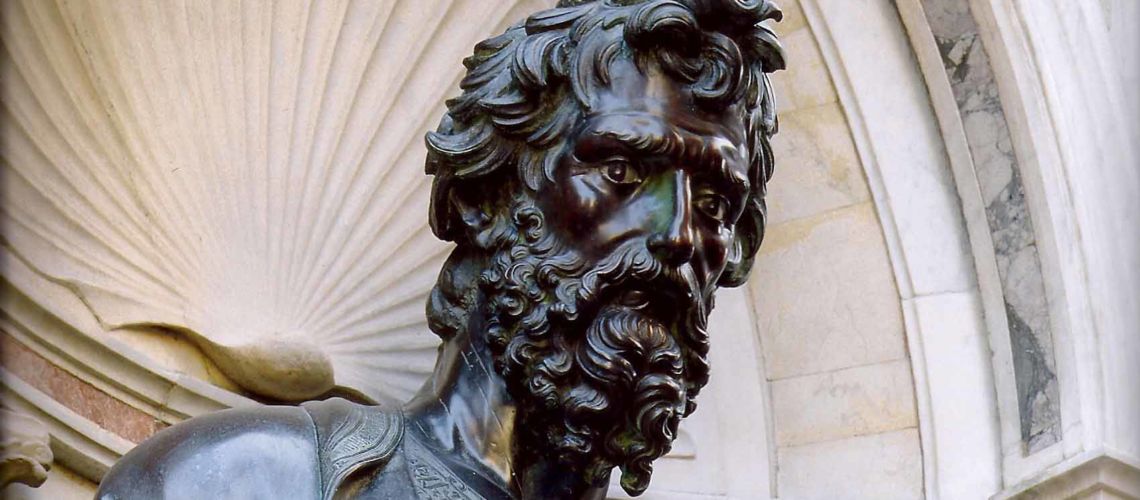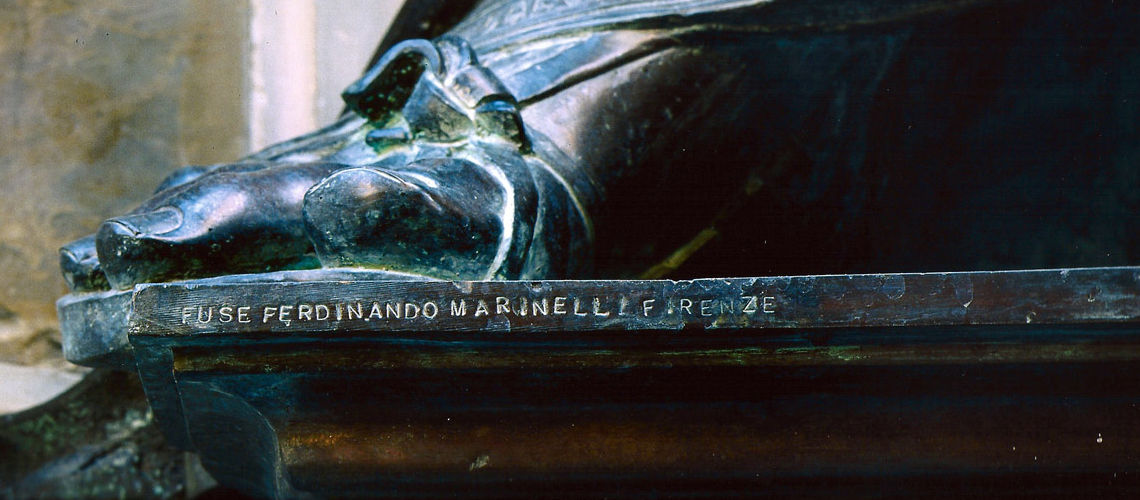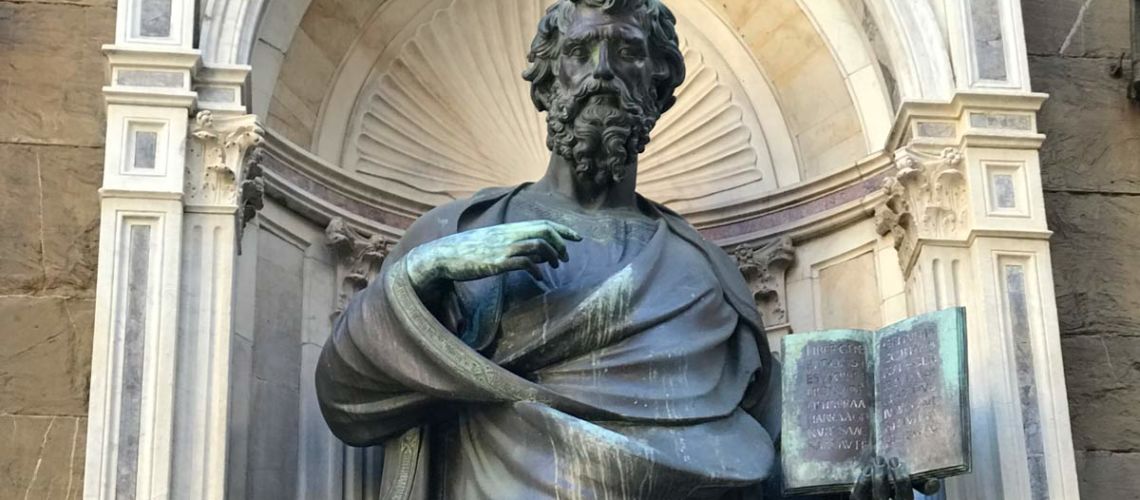Ghiberti's St. Matthew
The loss and recovery of lost wax casting
The bronze casting with the lost wax technique was lost with the fall of the Roman Empire, so much so that in the Middle Ages the sculpture was made exclusively in marble and stone, and the rare bronze doors were cast in Constantinople, where the Byzantines had retained, in part, the knowledge of this technique.
They were the first Florentine Renaissance artists to re-experiment the lost wax casting technique, helped at the beginning by Byzantine and Venetian artisans. And the first castings, even if of small and bas-relief pieces, came out with various defects, as can be seen in the panels of the Ghiberti’s Gates of Paradise, in which recast was carried out to repair lacks and gaps
A Renaissance lost wax casting, problematic and difficult
The church of Orsanmichele in Florence is dotted outside, in the lower part, with splendid niches in which large bronze and marble sculptures have been placed, each sponsored by one of the 14 Florentine “Arts”. Recently they have all been replaced by replicas and the originals are kept inside the second floor of the building, that is, in the Orsanmichele Museum
The “Art of Money Changers” of Florence commissioned to Lorenzo Ghiberti the one of its patron San Matthew in 1419: it had to be cast in bronze with the lost wax technique, 2.7 meters high, and cast in a single piece, that is with a single bronze pouring. Ghiberti, taking the gamble, accepted the challenge, but it went badly. It seems that the first cast was unsuccessful, and that Ghiberti had to carry out a second one at his own expense. However the story went, what is clear is that the statue that came to us was cast in two times: first the lower part, and then the upper part was poured back on top of the lower. That is, it was performed in two times and in two parts, but not by choice, but because the first cast was unable to complete the upper part of the large statue. Since the statue has arrived to us like this, it also means that it has been accepted by the client.
Restoration and replacement with a replica
The St. Matthew cast by Ghiberti was removed from the niche of the church of Orsanmichele and was taken to the Opificio delle Pietre Dure in Florence to proceed with its restoration.
The Galleria Bazzanti together with the Ferdinando Marinelli Artistic Foundry offered to cast the replica of the large sculpture with lost wax technique at their own expense. It was precisely during the study phases, and then at the beginning of the execution of the negative mold, that it became clear that the statue was cast in two stages, with the upper part re-poured over the lower one
It started with the study of wich technique to use for the negative mould which obviously would have not damaged either the patina or the original bronze surface
) and immediately after with the execution of the negative mold in silicone and mother mould
From the negative molds thus made by the Ferdinando Marinelli Foundry, waxes were obtained, transformed into bronze with the lost wax technique. The casting was made in 4 parts (two for the body, the head and the hand with the Gospel) assembled and welded with the same bronze alloy.
The replica thus replaced the original with an inauguration ceremony
The replica was appreciated also by the authorities. The subsequent defections of the pigeons contributed to “antiquing” the patina.

